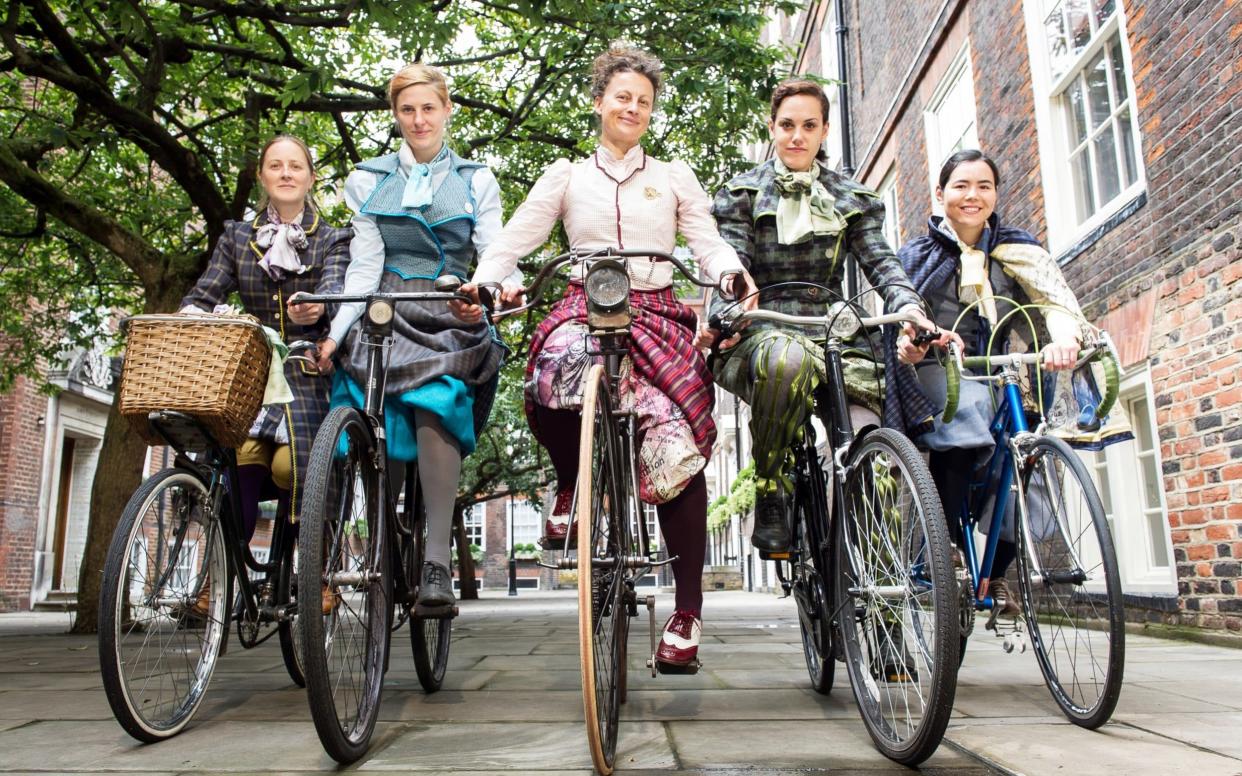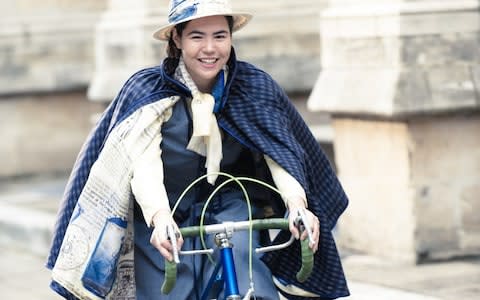Victorian women wore 'convertible skirts' so they could ride bikes without abuse, academic finds

Victorian women invented “convertible skirts” with secret pulley mechanisms to allow them to cycle freely, a university academic has found.
While bicycles were popular among middle and upper-class women in the nineteenth century, restrictive skirts and dresses meant that it could be dangerous to cycle.
It was common for long skirts and dresses to catch in bicycle wheels, or catch in pedals.
Onlookers often hurled abuse and stones at female cyclists, while conservative social attitudes meant that it was unacceptable to appear in public wearing trousers.
Dr Kat Jungnickel, a senior lecturer at Goldsmiths, University of London, said convertible skirts allowed women to secretly switch between their walking and cycling identities without being harassed.

Her research shows the invention of dresses with pulleys, concealed loops and buttons which made travel easier and safer.
Women riding bicycles were able to get around more quickly, without being chaperoned in public by a man.
As part of her project, Dr Jungnickel recreated some of the designs and tested them with vintage bicycles.
“The bicycle in Victorian Britain is often celebrated as a vehicle of women’s liberation,” Dr Jungnickel said.
“But less is noted about another vehicle through which women forged new mobile public lives – cycle wear.”
Dr Jungnickel’s research is focussed on the cities of London, York, Maidenhead and Bristol, and tells the story of six women who built women’s cycling clothes.
“Patented convertible cycle wear is an exciting example of women’s inventive contributions to cycling’s past,” she said.
“As these stories reveal, women responded to the social, material and technical challenges to their freedom of movement with vivid creativity. They actively and directly worked with and around barriers that sought to prevent them from cycling and engaging more broadly in public life.”

Alice Bygrave, a dressmaker from Brixton, south London, registered patents for a skirt with a dual pulley system sewn into its seams.
Other designs from the era include a three-part cycling suit with a concealed system of loops and buttons to elevate the skirt, and a garment known as the Hyde Park Safety Skirt which gathered fabric at intervals by a series of side buttons.
Mary and Sarah Pease, sisters from York, patented a skirt that could be quickly converted into a fashionable high-collar cape.
Dr Jungnickel’s research is presented in a new book, ‘Bicycles and Bloomers’, released today.
“I am delighted to have been able to recreate these inventions and to research these women, and I look forward to sharing this through my book and summer tour,” she said.
